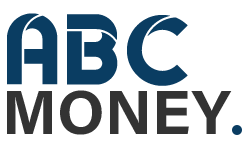The concept of efficient production has taken on a whole new meaning in this day and age. Not only must quality products be made within an amenable time frame, but concerns such as improving workflow and eliminating waste are other areas which need to be addressed. Taken as a whole, this is often referred to as “lean” manufacturing. Although these and other ideas may seem simple on paper, the fact of the matter is that preparation and training are the ultimate keys to success. How can current manufacturing processes be improved and why is it often prudent to outsource these requirements to third-party firms?
Why Streamline Workflow?
One of the issues confronting many manufacturing firms is that they often find it difficult to adopt an agile approach in order to streamline their current workflow. They are concerned about issues such as downtime and lost revenue. As a result, employees are not provided with the necessary skills sets at the appropriate intervals. This will ultimately result in lower levels of productivity; a very real issue within today’s competitive environment. Improving in-house techniques will enable management to adopt a more flexible approach while still guaranteeing continuous quality assurance. Employees will be motivated and perhaps more importantly, the existing levels of efficiency will be dramatically enhanced.
The Fundamentals Involved with Training
Training for manufacturing will normally centre around three basic principles:
- How to improve quality during each step of the entire process.
- The ways in which communications between sales, management and production teams can be enhanced.
- Discovering methods to minimise waste (both time and material) from start to finish.
It should already be obvious that the exact training programme will depend upon the needs of the organisation. This is once again why the notion of agility is important in order to address specific requirements as opposed to adopting a one-size-fits-all approach.
Leveraging Technology
Many experts point out that technology is playing an increasingly crucial role within the training sector. There are two main reasons for this observation. First, the educational processes themselves can be enhanced through techniques such as remote meetings, infographics and webinars. Secondly, this very same technology will then be employed in order to synchronise communications between different manufacturing teams. This helps to provide superior levels of clarity and insight along the way.
Constant Evaluations
Simply because a manufacturing technique works well today does not necessarily signify that this observation will remain valid in the future. Monitoring workflow as well as the approaches involved with allow stakeholders to appreciate whether or not any techniques need to be upgraded. In the same respect, training within the manufacturing sector should never represent a static concept. It needs to be ongoing so that employees are provided with the latest tools as they become available. Otherwise, the company risks falling behind its competitors. Reassessing situations when required is also great in terms of preparing for future; ideal within the business community.
In-house employee training is pivotal for any company that hopes to make the most out of its resources. Outsourcing this requirement to a third-party provider will offer a more flexible approach and the needs of the organisation can be proactively addressed throughout the entire process.

